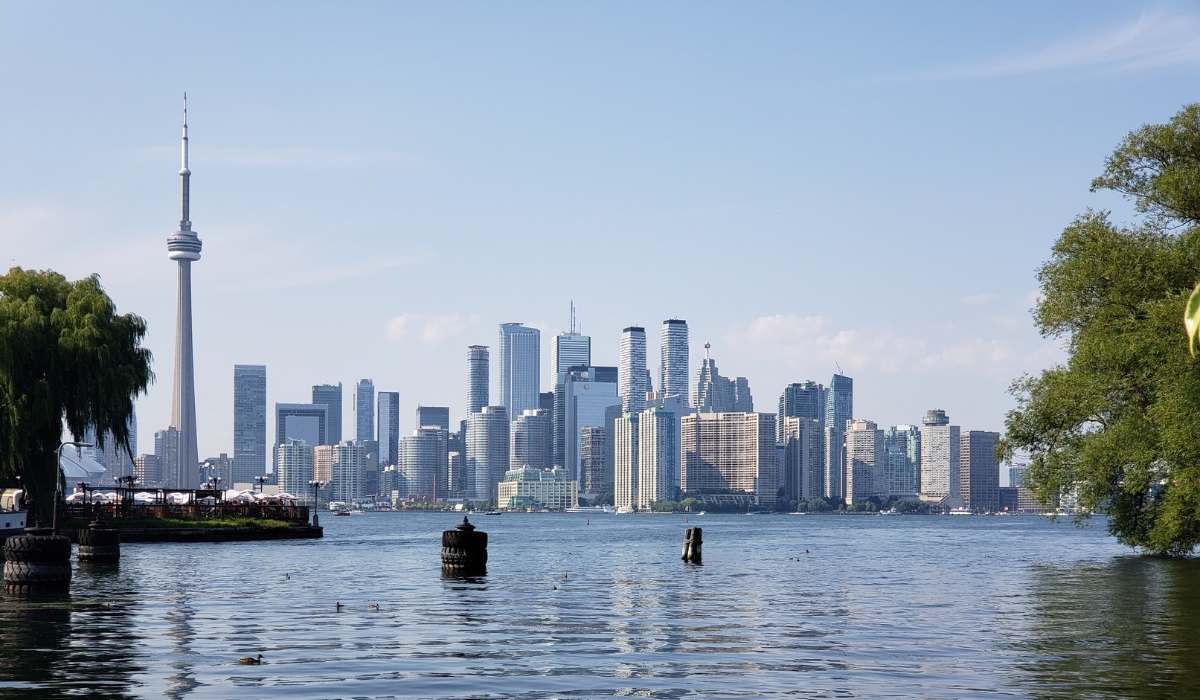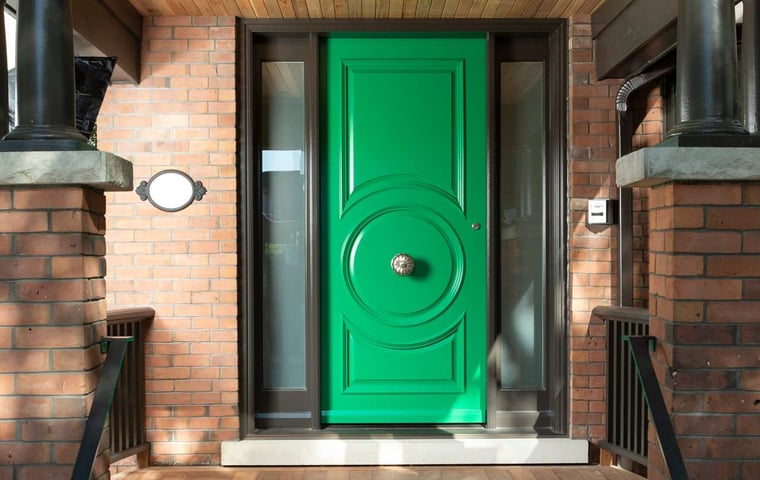
Unique Pockets of Toronto
As luxury custom home builders and renovators in Toronto, SevernWoods has the distinct honour of working in fascinating places with striking character, aesthetics, and amenities. Here are some of our favourite noteworthy niches in Toronto.
Baby Point
Avoid out-of-towner faux-pas and note the pronunciation. Baby Point is named after James Baby, and the pronunciation includes a short a. Baby Point rhymes with Tabby Point. This lovely bend in the Humber River has been prime real estate for a very long time. First noted as a Seneca village in the 1600s, the river forms a practical and defensible western border. Jacques (James) Baby arrived in 1762 and set up a fur trading operation, becoming the namesake of this green and picturesque Toronto nook.
After narrowly missing a plan to erect military barracks in this area, Baby Point was first sold as a subdivision in the early 1910s. That’s why most of the historic architecture in this neighbourhood reflects the influence of trendy Edwardian, Craftsman, and Tudor homes of its development boom in the 1920s and 1930s. These are spacious, picturesque homes with stunning historic charm. Many of the most enticing homes back up to the banks of the beautiful Humber.
Annette and Jan Street have eclectic shopping and dining options within walking distance, and Bloor street shopping is just a 15-minute walk away. Residents can also save steps and catch the Jane Street bus, and easily make their way to the Bloor-Danforth Subway line for their commute. The Baby Point Club offers members recreational options like tennis and lawn bowling and the opportunity to connect with their neighbours.
_11zon.jpg?width=760&height=443&name=Blog%20Images%20(4)_11zon.jpg)
Palmerston Boulevard
Wondering about those fancy iron gates and lights between Bloor Street and College Street at the end of the road? Welcome to Palmerston Boulevard. It’s a not-so-subtle status statement, but the stone and iron are honest signals of this high-end Toronto neighbourhood’s affluence. Nestled between Koreatown and Little Italy, Palmerston Boulevard residents have plenty of nearby options for excellent dining and more.
Houses on Palmerston Boulevard are mostly upper-middle-class family homes built in the first few years of the 20th century, providing a uniquely uniform aesthetic on the maple-lined streets. The Church at Palmerston and College Street predates the homes of the boulevard, offering classic architecture from the end of the 19th century. It is no longer a place of worship, but rather an attractive array of condominiums. Palmerston is a quiet area that offers access to adjacent Bloor Street shopping and transportation access.
Playter Estates
Galleries, trend-setting boutiques, and cafes call Playter Estates in East Central Toronto home, but the centrepiece of the first-class shopping district is the Carrot Common, which features a health-conscious lifestyle for active and health-minded residents and attracts shoppers from all over the city. Playter Estates also has easy access to the popular Danforth shopping district, with boutiques, wine shops, cafes, and top-notch Greek restaurants, for which the area is best known.
In keeping with a health-conscious lifestyle, Playter Estates offers greenspaces to stay active or to just relax and take in the sights. Riverdale Park is known for its plethora of facilities, such as tennis courts, an ice rink, sports fields, a swimming pool, walking/running paths, and biking trails.
The area is so sought after that the housing market has a bit of a competitive reputation. This is likely due to the neighbourhood’s excellent public schools, like Jackman Avenue Junior Public School, Withrow Avenue Public School, and Frankland Community School.
The homes range from charming detached single-family homes and contemporary estates to heritage Victorian and Edwardian homes that sprung up when sections of Playter family farmland were sold after 1912. Captain George Playter and his sons were important settlers in Toronto's history, arriving in the area then called York in 1790. The Playter family legacy leaves traces throughout this charming and convenient neighborhood. Many street signs have Playter family significance.

Teddington Park & Riverview Drive
You’ll find doctors, judges, and other successful Toronto professionals who live in Teddington Park enjoying the adjacent favourites Rosedale Golf Club and Riverview Drive Ravine. This upscale neighbourhood sprung up around the exclusive Rosedale Golf Club after the club was built on farmland in 1909. Many of these generous and stately estates draw their design influence from the Tudor and Edwardian themes embraced by the Rosedale Golf Club.
Golf clubs and large, sprawling estates make for quiet neighbours. Even Glen Echo Road, the main drag, is relatively quiet. This tranquil area offers other options for wholesome recreation, such as Wanless Park’s tennis courts and playground and indoor fun, like swimming at the Bedford Park Community Center.
_11zon.jpg?width=1200&height=700&name=Blog%20Images%20(7)_11zon.jpg)
Teddington Park offers premium cafes, niche shopping and dining, high-end grocery stores, fitness centres, and more. If the nearby amenities don’t satisfy, residents have a quick walk to Lawrence Ave or Yonge Street for other great shopping and dining options. Public transportation is best accessed through Lawrence Ave, which connects to the Yonge-University-Spadina subway line, or via York-Mills station.
Republic of Rathnelly
We love the cohesive community and fascinating story behind this 5-block square of South Hill. One fateful day in June 1967, the residents of this area declared themselves an independent republic as a neighbourhood gag, mainly to pursue temporary variances from Canadian law that prohibited bonfires and drinking in the streets, two staples of Rathnelly community events that persist to this day, such as the Rathnelly Party in June. Rathnelly elected a queen, for whom one of the main laneways is named.
When it first succeeded in the ‘60s, Rathnelly was mostly a district of rooming houses. It is now a high-end neighbourhood which starts at a few million dollars and the real estate prices go up from there. The remaining architecture was mostly built between 1880 and 1910 and showcases Victorian stunners and luxury detached and semi-detached brick homes created by renovating lower-end rooming houses.
Residents enjoy nearby access to the Nordheimer Ravine and Nature Trail and indoor recreation at The Brown Community Center. There’s plenty of walkable boutique shopping, cafes, art galleries, antique shops, and dining. Residents without a car will catch a bus or streetcar to reach their final destination across the city.
.jpg?width=769&height=448&name=Blog%20Images%20(2).jpg)
Wychwood Park
Marmaduke Matthews built the first house in the area in 1874. Marmaduke, a painter, envisioned an artist's haven and communal living. Wychwood Park still operates under a unique charter inherited from Mr. Matthews in which the residents maintain the distinct road, spring-fed Taddle Creek Pond, and surrounding area, but the city provides municipal services like trash removal.
The infighting and drama over the following years regarding maintaining Taddle Creek Pond, a neighbourhood tire-slasher, and other local dilemmas have created a long and fascinating neighbourhood backstory. Now home to many younger families and newcomers, this idyllic neighbourhood is home to 60 beautiful residences.
Residents of Wychwood Park need to catch the bus service at Dupont Road or the streetcar on St. Clair Avenue in order to get around town. The best bet for shopping and dining is on St. Clair Avenue West.
Interested in a custom home or renovation in Toronto? Our gleaming portfolio speaks for itself, and we back it with decades of experience. SevernWoods would love to talk to you about your luxury residential construction plans.
Popular Topics



